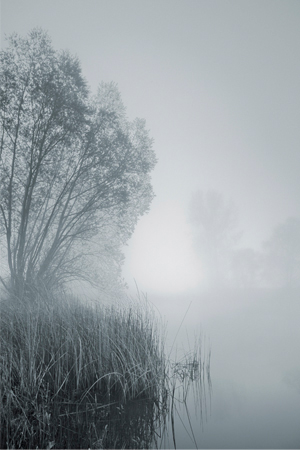
Our eyes see in colour but to be successful in black and white photography it’s important to train them to see the world as tones of grey.
A red flower in a green field may look great in colour, but when converted to mono, if those colours reproduce as the same shade of grey the result will be a very dull picture.
It takes time to develop an eye for mono. One way to help it along involves taking a photographic grey card out and comparing it with objects you encounter. Ask yourself, would that colour be lighter or darker than the grey card?

The best black and white photography exploits the differences in tone between elements in a scene, which can either be photographed ‘straight’ or manipulated either by using on-camera filters, or Photoshop. Great black and white photos also make good use of shapes, textures, lines and lighting, to compensate for the loss of colour.


Fog, mist and haze all have the potential to lower subject contrast and create a soft, romantic feel to an image.
When it’s misty or foggy out, the world is almost transformed into a naturally monochrome wilderness populated with enchanting tones and an eerie stillness. Bearing this in mind, why not get out and about next time a mist rolls in off the sea or a fog settles for the evening?
Remember that objects and features closer to the lens will tend to show heavier tones than elements that are further away, so bear this in mind when composing your shot.

Concentrating on interesting shapes can be a great way of crafting a bolder image.
To appreciate an object’s outline there needs to be tonal variation between subject and background. Reducing your focal point to a silhouette is a marvellously effective method to achieve this.
Base your exposure on the bright background, take an average reading, and be sure to select a foreground subject that is easily recognised.
Understanding the impact of form on your final image is also useful for black and white phtoography. For example, having the sun at your back certainly ensures even illumination, but sadly produces an image that often looks flat.
However, simply adjusting your relationship to the light can have a great improvement. Moving to an angle of between 45° and 90° will give a heightened sense of volume by placing useful shadows on the far side of your subject.


